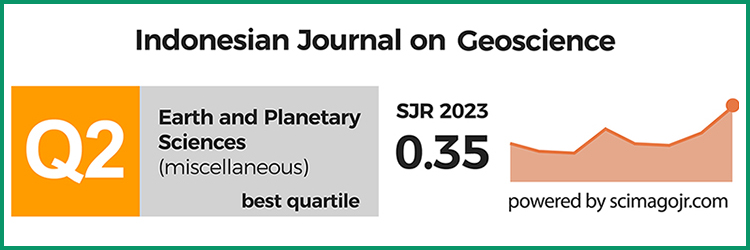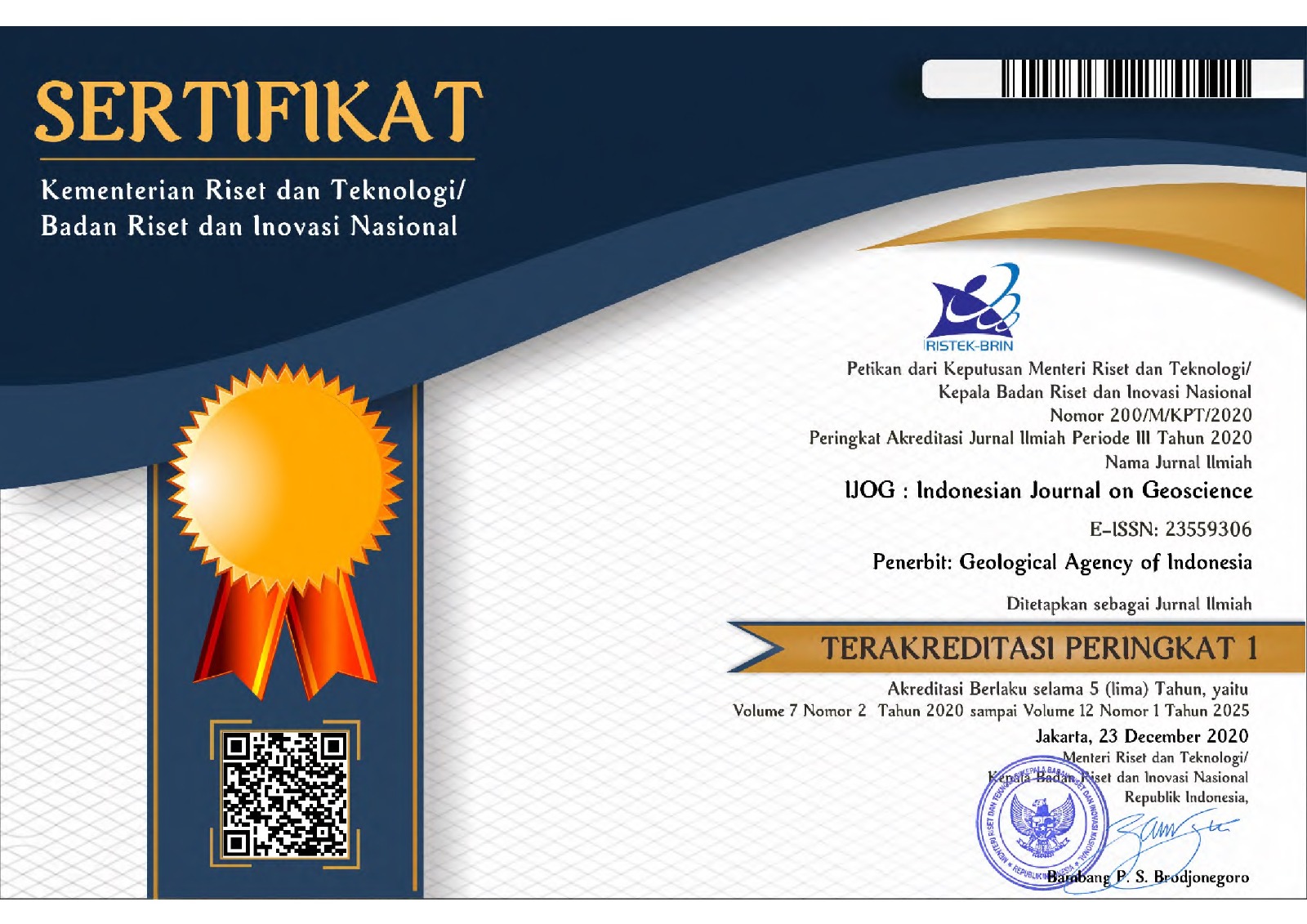Sedimentation Rate During Miocene to Pleistocene Related with Nannofossil Biostratigraphy, in Banyuurip, Kedewan, Rembang Zone, East Java Basin, Indonesia
DOI:
https://doi.org/10.17014/ijog.10.3.349-361Abstract
The researched area is located in Rembang Zone, North East Java Basin. The Rembang Zone is one of the largest basins in Indonesia. In this area, there are many oil wells that today are still actively producing. The research concerning the content of microfossils in marine sedimentary outcrops is needed to determine the rate of sedimentation in a basin. The method is basically based on the result of stratigraphic measurements of two sections with a distance of 2,743.7 m. Sedimentation rate is the average thickness ratio to the average time interval. The sections have a good outcrop and a continuous stratigraphic sequence from Miocene (Wonocolo, Ledok, and Mundu Formations) to Pleistocene (Lidah Formation). Samples taken in the section consisted of fourty-one samples of marls and shales. The results of the analysis show eighteen genera with fifty-seven species of nannoplankton. While the resulting biostratigraphic zone can be arranged into eleven zones consisted of two partial, one range and eight interval zones. The development of sedimentation rate (RoS) of studied area consists of ten periods, those are (1) CNM15 Zone/ Late Miocene of Ledok Formation at a depth of 427.8 - 322.4 m, and has a sedimentation rate (RoS) of 11.46 cm/ ky, (2) CNM16-CNM20 Zone/Late Miocene to Early Pliocene, Ledok Formation at a depth of 322.4 - 279.3 m and has a RoS of 1.54 cm/ky, (3) Mundu Formation is CNPL2 Zone/Early Pliocene at a depth of 279.3 - 223 m and has a RoS of 5.41 cm/ky, (4) CNPL3 (Early Pliocene) Zone at a depth of 223 - 148.4 m and has a RoS of 33.91 cm/ky, (5) CNPL4 Zone (Middle Pliocene) at a depth of 148.4 - 82.7 m and has a RoS of 5.09 cm/ky. (6) Zone of CNPL5 (Middle-Late Pliocene) at a depth of 82.70 - 53.1 m and has a RoS of 21.14 cm/ky, (7) CNPL6 Zone/Late Pliocene at a depth of 53.1 - 52.0 m and has a RoS of 0.24 cm/ky, 8). CNPL7 Zone/Late Pliocene to Early Pleistocene at a depth of 52.0 - 33.8 m and has a RoS 8.27 cm/ky, (9). CNPL8 Zone (Early Pleistocene) at a depth of 33.8 - 26.4 m and has a RoS of 1.14 cm/ky, (10) CNPL9 Zone? (Early Pleistocene) at a depth of 26.4 - 12.5 m and has a RoS of 1.7 cm/ky. The relatively faster sedimentation rate of the CNPL3 is due to the faster subsidence and maximum sediment supply. During the development of sedimentation rate, there are two unconformities, namely (1) after the CNM20 Zone resulting in a sedimentation interval during CNPL1 and (2) after CNPL6 (Late Pliocene).
Keywords: sedimentation rate, biostratigraphy, Rembang Zone, Banyuurip



















